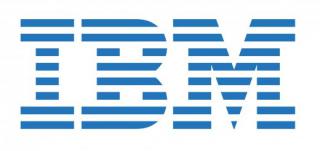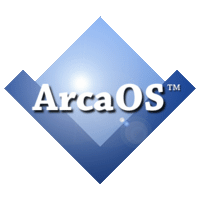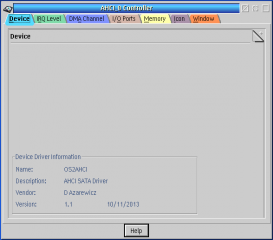This is a hardware driver for SATA Controller working in AHCI mode.
SATA AHCI Disk Controller
Version:
2.09
Release date:
Monday, 17 October, 2011
Categories:
License:
- GPL
Interface:
- PMShell
- Workplace Shell
- VIO
Manual installation
Following ones are the download links for manual installation:
| SATA AHCI Disk Controller v. 2.09 (24/6/2023, Arca Noae LLC) | Readme/What's new |
AHCI Driver for OS/2
Introduction
============
OS2AHCI is an AHCI driver for OS/2. It supports both ATA and
ATAPI devices in a single driver. An ATAPI/CDROM filter driver is
only required if you want to read/write CD-DA (audio) format CDs.
Copyrights and License
======================
(c) Copyright IBM Corporation 1990,2000.
All rights reserved.
Copyright (c) 2011 thi.guten Software Development
Copyright (c) 2011 Mensys B.V.
Copyright (c) 2013-2023 David Azarewicz
Authors: Christian Mueller, Markus Thielen
Parts copied from/inspired by the Linux AHCI driver;
those parts are (c) Linux AHCI/ATA maintainers.
This program is free software; you can redistribute it and/or modify
it under the terms of the GNU General Public License as published by
the Free Software Foundation; either version 2 of the License, or
(at your option) any later version.
This program is distributed in the hope that it will be useful,
but WITHOUT ANY WARRANTY; without even the implied warranty of
MERCHANTABILITY or FITNESS FOR A PARTICULAR PURPOSE. See the
GNU General Public License for more details.
You should have received a copy of the GNU General Public License
along with this program; if not, write to the Free Software
Foundation, Inc., 59 Temple Place, Suite 330, Boston,
MA 02111-1307 USA
The OS2AHCI.ADD Driver Software is a derivative work of the IBM DDK.
Binary programs and documentation for the OS2AHCI.ADD Driver
Software are licensed to and distributed by Arca Noae, LLC.
The source code can be retrieved from http://svn.netlabs.org.
In compliance to the GNU General Public License, the source code
can of course be modified/compiled to run on other products as long
as modifications will also be published as outlined in the GNU GPL.
Please note that builds other than the official binary delivered by
the Arca Noae web site are not officially supported.
Getting Support and Reporting Problems
======================================
For more information and to report problems please visit:
https://www.arcanoae.com
and click on SUPPORT.
Or go directly to the AHCI support wiki at:
https://www.arcanoae.com/wiki/ahci/
Driver Command Line Options
===========================
Global Options
Option Description
-----------------------------------------------------------------------------
/A:n Set adapter to n for adapter-specific options
(default = -1, all adapters)
/F Ignore the request flag and force the use of the HW
write cache when using NCQ commands; see "Native Command
Queuing" below for further explanation (default=off)
/G:<vendor>:<device> Add generic PCI ID to list of supported AHCI adapters
(e.g. /G:8086:2829)
/I Ignore current adapter if no port has been specified.
Otherwise, ignore the current port on the current adapter.
/P:n Set port to n for port-specific options
(default = -1, all ports)
/R Reset ports during initialization (default = on)
Can be turned off with /!R, however, when the
[Intel] AHCI controller was found to be
initialized by the BIOS in SATA mode, ports will
always be reset even when /!R is specified
/T Perform thorough PCI ID scan; default = on, can be
turned off with /!T to perform only a PCI class scan
/U Check for usable disks and mark disks that are not usable
as unavailable for normal OS/2 operations. To be usable a
disk must be an MBR disk or wiped. (default=on) Can be
turned off with /!U. Warning: Use /!U with caution and
only temporarily if absolutely necessary to reconfigure a
disk. Normal operation with /!U is not recommended and
can lead to uncorrectable disk problems.
/V Display informational messages during boot.
Debugging options (may only be available in debug builds)
Option Description
-----------------------------------------------------------------------------
/B:<baud> Initialize the COM port to the specified baud rate. Allowable
baud values are: 300, 600, 1200, 2400, 4800, 9600, 19200,
38400, 57600, and 115200. /B has no effect if /C is not also
specified. If /B is not specified, the COM port is not
initialized. For example, if you are using the kernel debugger,
the kernel debugger initializes the COM port so you should not
use this switch.
/COM:<n> Set debug COM port base address. Values for n can be:
1 = COM1
2 = COM2
a hex value (COM port base address) COM1=3f8, COM2=2f8
The default is 0. If set to 0 then no output goes to the COM port.
/DEBUG:<n> Sets debug mask
/W Allows the debug buffer to wrap when full.
Port-specific Options
Option Description
-----------------------------------------------------------------------------
/S Enable SCSI emulation for ATAPI units (default = on)
SCSI emulation is required for tools like cdrecord.
/N Enable NCQ (Native Command Queuing) for hard disks
(default = on) Can be turned off with /!N.
/LS Set link speed (default = 0):
0 = maximum,
1 = limit to generation 1
2 = limit to generation 2
3 = limit to generation 3
/LP Set link power management (default = 0):
0 = full power management,
1 = transitions to "partial slumber state" disabled,
2 = transitions to "slumber state" disabled,
3 = transitions to both partial and slumber states disabled
/4 Force reported track size to be 56 sectors regardless of the
actual disk geometry. Intended to optimize partition boundaries
for hard disks with 4096 byte sectors. May not work with LVM.
Port-specific options depend on the currently active adapter
and port selector (/A and /P). Those selectors are -1 per default
which means "all" adapters/ports. The scope can be reduced by limiting
it to an adapter (/A) or an adapter and a port (/A and /P). The scope
can be reset by setting the corresponding option back to -1.
For example:
BASEDEV=OS2AHCI.ADD /N /A:0 /P:5 /!N /A:1 /P:-1 /!N
This has the following effect:
- Enable NCQ for all hard disks
- Disable NCQ for hard disk on adapter #0, port #5
- Disable NCQ for all hard disks on adapter #1
Another example:
BASEDEV=OS2AHCI.ADD /A:0 /P:0 /I
Means to ignore the disk plugged into port 0 on adapeter 0.
Native Command Queuing
======================
Native Command Queuing (NCQ) is a feature which allows sending multiple I/O
requests to hard disks before waiting for any of the requests to complete,
much like Tagged Command Queuing for SCSI devices. This allows the disks
to reorder I/O requests to minimize head movements, resulting in improved
performance when executing random I/Os. In practice, this will be most
noticeable when multiple programs request I/O services to different parts
of the disk -- a single program typically won't queue up I/O's but instead
will wait for each I/O to complete (with the exception of programs like
database servers).
NCQ and HW Caches
-----------------
In NCQ mode, OS2AHCI supports a request flag which allows upstream code
(e.g. file systems) to force writes to go directly to the disk instead
of being buffered in the HW disk cache. The command line option "/F"
forces NCQ commands to use the hardware cache, ignoring the request flag.
This may result in data loss in case of power failures. When rebooting
or shutting down, the HW disk cache is always flushed regardless of any
of the command line options.
Interoperability With IDE Drivers
=================================
There are three kinds of IDE/ATA/SATA controllers:
1. Older controllers (IDE or SATA) without AHCI support
This kind of controller will only be recognized by IDE drivers
(IBM1S506.ADD or DANIS506.ADD).
2. AHCI-capable controllers which supports IDE/SATA interfaces
This kind of controller will work with IDE or AHCI drivers and it's
up to the user to decide which driver to use.
3. AHCI-only controllers
This kind of controller will only be recognized by OS2AHCI.
If there's a mix of controllers of types 1 and 3, both an IDE and an AHCI
driver will be required.
If type 2 controllers are involved, it's up to the user to decide which
driver to use. Both DANIS506.ADD and OS2AHCI.ADD will verify whether another
driver has already allocated the corresponding adapter, thus the only
decision to take for mixed configurations is whether type-2 controllers
should be handled by DANIS506.ADD or OS2AHCI.ADD and this can be done by
having the desired driver's BASEDEV statement coming first in CONFIG.SYS.
NOTE: Older versions of DANIS506.ADD did not verify whether the resources
of a particular adapter were already allocated by another driver.
DANIS506.ADD 1.8.8 or later is required for this to work.
When using earlier versions of DANIS506.ADD, the options "/A:x /I"
will be required to tell DANIS506.ADD to ignore adapters to be
driven by OS2AHCI.ADD. The same applies to IBM1S506.ADD
Mixed Controller Example
------------------------
Assume a DELL D630 or a Thinkpad T60. The hard disk is attached to the
SATA/AHCI controller of the ICH-7 hub while the CDROM is attached to the
PATA IDE controller. This allows two different configurations:
1. Drive HDD and CDROM via DANIS506.ADD
2. Drive HDD via OS2AHCI.ADD and CDROM via DANIS506.ADD
OS2AHCI.ADD can't drive the CDROM because it's attached to an IDE controller
which doesn't support AHCI.
- If OS2AHCI.ADD comes first in CONFIG.SYS, it will take over the SATA/AHCI
controller and drive the HDD. DANIS506.ADD will take care of the PATA/IDE
controller for the CDROM.
- If DANIS506.ADD comes first in CONFIG.SYS, it will take over both the
SATA/AHCI and the PATA/IDE controller and OS2AHCI.ADD will silently exit.
SMART Support
=============
Starting with version 1.22, OS2AHCI supports the IOCTL interface required by
existing SMART monitoring tools. Beware that the IBM version of smartctl.exe
is hard-coded to open the character device named "IBMS506$" so it will not
work with OS2AHCI. You must use a version that allows specifying ahci devices.
NOTES:
- The IOCTL interface for SMART is based on the idea of IDE controllers
with a master and a slave drive. OS2AHCI maps all devices (ATA or ATAPI)
sequentially to this pattern. If, for example, you have 4 hard disks and
one CDROM attached to a single controller on ports 1, 2, 5, 7, and 11,
SMART tools will see 3 controllers as follows:
- controller 0, master: HD on port 1
- controller 0, slave: HD on port 2
- controller 1, master: HD on port 5
- controller 1, slave: HD on port 7
- controller 2, master: CDROM on port 11
- The DSKSP_GEN_GET_COUNTERS interface is currently unsupported; calls to
the corresponding IOCTL will return 0 for all counters. SMART counters
are not affected by this limitation, i.e. SMART tools will be able to
report counters from the physical disk; this limitation only affects
the software counters maintained by ADD drivers which do support the
DSKSP_GEN_GET_COUNTERS IOCTL request.
Known Issues and Limitations
============================
Hot swap is not supported.
Port expanders are not supported. Only one drive per port is allowed.
Manual Installation
===================
- Copy the driver file, OS2AHCI.ADD, to \OS2\BOOT on your boot disk.
- Add the following line to CONFIG.SYS:
BASEDEV=OS2AHCI.ADD
Building The Driver
-------------------
The toolchain required for compilation consists of:
- The MiniDDK or an updated DDK (You must have a DDK license
to build this driver.)
- Open Watcom version 1.9 or later
- The Drv32 kit. (You must have a DDK license to use the Drv32 kit.)
Define DDK, WATCOM, and DRV32KIT in the environment.
Use "wmake" or "wmake -a" to build the driver. See _build.cmd.
Change Log
==========
v.2.09 24-Jun-2023 - David Azarewicz
Added workaround to help with VirtualBox issues.
Improved diagnostic messages.
Changed how timeouts are reset and how ctx hooks are triggered.
Added quirk for devices with issues executing some standard commands.
Changed to make /N the default.
v.2.08 20-Feb-2021 - David Azarewicz
Corrected RM ADD handle and unit.
Changed the internal implementation of /U to accomodate gpt filter.
Added support for 48/64 bit LBA operations.
Added test for non-aligned SG list element.
v.2.07 19-May-2019 - David Azarewicz
Fixed hardware failure recovery to arm ctx hook in watchdog timer.
v.2.06 19-Sep-2018 - David Azarewicz
Added Usable Disk check to ignore non-usable (e.g. non-MBR) disks.
Added /U switch to enable/disable Usable Disk check.
v.2.05 05-Apr-2018 - David Azarewicz
Changes to debug output for debug versions.
Removed interrupt reqirement on init.
v.2.04 06-Dec-2017 - David Azarewicz
Cosmetic changes to user display.
Fixed the ioctl pass-thru interface.
Removed the old IBM smartctl.exe from the distribution.
v.2.03 15-Jul-2017 - David Azarewicz
Added MSI support. PSD 3.23.06 or higher is required for MSI.
v.2.02 07-Jun-2017 - David Azarewicz
Fixed interrupt handler issue for multiple adapters.
v.2.01 01-Oct-2016 - David Azarewicz
Major reorganization of the entire driver.
Enhanced debugging support.
v.1.32 09-Nov-2013 - David Azarewicz
Fix for some hardware that reports incorrect status
Report real device in addition to fake SCSI device when SCSI emulation
is enabled.
v.1.31 21-Aug-2013 - David Azarewicz
Enhanced debug output.
Added code to check for bad geometries reported by the BIOS and fix them.
Fixed a PCI ID coding error that has been there since version 1.01.
v.1.30 29-Jun-2013 - David Azarewicz
Enhanced debug log output
Removed the IBMS506 header that was causing problems and shouldn't
be there anyway.
Fixed a defect in the SMART IOCtl.
Added ability to ignore individual ports.
v.1.29 12-Jun-2013 - David Azarewicz
Changed scsi emulation to be on by default.
v.1.28 01-Jun-2013 - David Azarewicz
Reworked trap dump kernel exit
Removed unused IDC entry point.
Reworked suspend/resume routines.
Implemented a temporary hack to make resume work reasonably well.
Suspend/resume is only supported on OS/2 systems with ACPI.
Suspend/resume is known to not work reliably and cannot be further
addressed in this driver.
v.1.27 23-Apr-2013 - David Azarewicz
Added LVM aware disk geometry reporting.
Begin to add disk information report - not finished yet.
Removed undocumented /Q switch and made the driver quiet by default.
Debug output improvements.
Added /B switch for setting debug baud rate.
Fixed up time delay functions
v.1.26 26-Mar-2013 - David Azarewicz
Fix spin-up / power-up issue on some hardware
Reorganized and improved debug output.
v.1.26 21-Feb-2013 - rousseau
Virtual box fix
Some SMP fixes
Changed default for port reset to always
v.1.25 02-Oct-2012 - markus.thi
Added support for trap dumps
v.1.24 21-May-2012 - markus.thi
Fixed JFS long format hang (ticket 16)
V.1.23 16-May-2012 - markus.thi
added IDC entry point to allow switching back to BIOS mode
v.1.22 17-Oct-2011 - markus.thi
Added "IBMS506" header to accomodate broken SMART tools. |
 www.arcanoae.com www.arcanoae.com |
||
| SATA AHCI Disk Controller v. 0.1.4 (16/9/2011) | Readme/What's new |
SATA AHCI Disk Controller "OS/2 Community" Driver for OS/2 & eCS V0.1.4
=======================================================================
Overview
--------
This is a current build of the latest snapshot of the os2ahci driver source
which is currently at V0.1.4+ level. The driver will only work with SATA
controller set to AHCI mode, additional filter drivers are not required and
not supported. The danis506 driver is still required for SATA Controller set to
compatible or enhanced mode. For more details check the orginal readme file.
This driver supports the following list of SATA controller:
■ AMD FCH A45/A50M/A55/A60M/A70M/A75 family
■ ATI SB600/700/800 family
■ Intel ICH6/7/8/9/10 family, ESB2, PCH5 family
■ Marvell 6121, 6145
■ Nvidia MCP 65/67/73/77/79/89 family
■ Promise PDC42819
■ SIS 966, 968
■ ULI M5288
■ VIA VT8251
o Unknown but compatible SATA AHCI controller can be added easily via driver
parameter
Requirements
-----------
- modern hardware with bug free BIOS
- OS/2 Warp 4, MCP, ACP or eCS 1.x, 2.x |
 hobbes.nmsu.edu/download/pub/os2/system/drivers/storage/os2ahci_v0-1-4.zip hobbes.nmsu.edu/download/pub/os2/system/drivers/storage/os2ahci_v0-1-4.zip |
Record updated last time on: 25/07/2023 - 04:07

This work is licensed under a Creative Commons Attribution 4.0 International License.



Add new comment